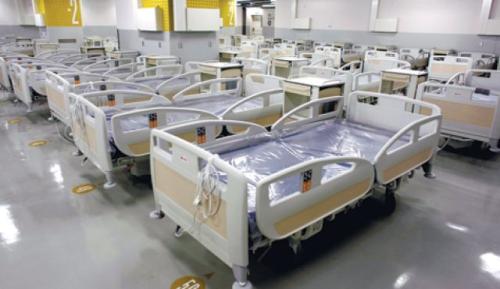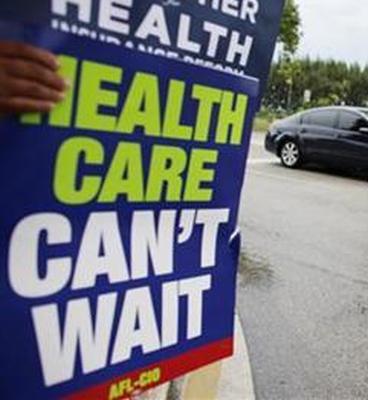 | « Back to article | Print this article |
How to plan for health-related expenses
Sridhar Iyer's (28) parents are diabetic for several years. Iyer knows that sooner or later he might suffer from the same ailment, as diabetes is hereditary.
So, he has already bought a health cover of Rs 500,000. Since his parents cannot be covered by any medical insurance, Iyer has set aside Rs 500,000 in a fixed deposit to meet any medical expenses that might arise for his parents.
While Iyer was sensible enough in planning his and his parents' unexpected medical expenses, Ashish Kumar (37) did not have the foresight to do so.
Kumar's wife (35) was recently diagnosed with thyroid. Kumar is now trying to get her insured, but chances are that either the insurance company will consider the illness as pre-existing and not cover it for the initial three-four years or permanently exclude thyroid treatment for her.
Each family's situation is unique. One needs to assess the situation and accordingly plan for health related expenses. Healthcare costs have been steadily increasing over the years and to avoid a massive drain of savings or investments one needs to plan well in advance.
| TABLE:1 | |||
| ANALYSIS OF HEALTHCARE COSTS | |||
| Treatment | 2012 Cost (Rs) | 2007 Cost (Rs) | Increase (%) |
| Cataract | 24,000 | 16,000 | 50 |
| Angiography | 22,000 | 14,000 | 57 |
| Coronary Artery By pass Graft (CAGB) | 2,35,000 | 1,65,000 | 42 |
| Appendectomy | 42,000 | 28,000 | 50 |
| Heamorrhoidectomy (Piles) | 35,000 | 21,000 | 60 |
| Cholecystectomy (Gall Bladder removal) | 52,000 | 32,000 | 63 |
| TURP (Prostate Surgery) | 62,000 | 37,000 | 68 |
| Angioplasty (PTCA) with 2 stents | 2,45,000 | 1,55,000 | 58 |
Click NEXT to read more...
How to plan for health-related expenses
Given below are a few situations where adequate planning can ensure that you are prepared.
Buying health insurance
Unexpected hospitalisation expenses can be best covered by health insurance. It is very economical, too, to insure ones family at younger age.
For example, a family consisting of parents (up to age 35) and two children can be insured under a family floater cover of Rs 400,000, for an annual premium of approximately Rs 12,000.
Families where the parents are old, efforts must be to insure them as early as possible, lest they become uninsurable after a particular age.
Even in cases where parents have crossed 60 years, there are some insurance companies which offer cover, but with a co-payment clause.
This means that a part of the expenses have to be borne by the insured. These policies cover up to 70 per cent of the hospitalisation cost.
Most salaried people are covered by group health insurance provided by the employer. In such cases, too, some employers provide the facility to cover old parents by paying a nominal additional premium.
One should take advantage of this facility, as old parents get covered even without undergoing any medical tests.
Click NEXT to read more...
How to plan for health-related expenses
How much cover to buy
There is no thumb rule for this, but one can decide depending on the income and responsibilities of the person who is to be insured.
Due to increasing stress and sedentary lifestyles, more and more young people, under 35 years, suffer from diseases such as diabetes, hypertension, and so on.
At the beginning of your career, in the 21 - 25 years age group, you can start with a Rs 200,000 - 300,000 medical cover and enhance it later once you get married or grow in your career.
For the high income earner in this young age, Rs 500,000 health cover would be ideal. For those with a young family (28-35 years) a family floater insurance policy of Rs 300,000 - 500,000 can be taken and increased gradually.
Again, depending on your income, you can even take a Rs 10-lakh (Rs 1 million) floater which is now easily available for a family of four (2 adults and 2 children) for an approximate annual premium of Rs 17,500.
For people in the higher age category, such as 40 years and above, individual health cover will be better, as each member in the family will have a separate cover.
| TABLE:2 | ||||
| COMPARISON OF PREMIUM FOR DIFFERENT AGE GROUPS | ||||
| Age group | Individual health cover | Annual premium | % increase over slab premium | Annual % increase in premium |
| 30 - 35 years | 3,00,000 | 4,000 | 0 | 0.03 |
| 36 - 45 years | 3,00,000 | 4,500 | 12.5 | - |
| 46 - 50 years | 3,00,000 | 7,000 | 56 | - |
| 51 - 60 years | 3,00,000 | 10,000 | 43 | - |
| TABLE:3 | ||||
| Family floater cover for 2 adults & 2 children | ||||
| 30 - 35 years | 3,00000 | 8,000 | 0 | 0.03 |
| 36 - 45 years | 3,00000 | 9,500 | 18.75 | - |
| 46 - 50 years | 3,00000 | 14,500 | 53 | - |
| 51 - 60 years | 3,00000 | 18,000 | 19 | - |
| Annual % increase in premium taken from age 30 to age 60 | ||||
Click NEXT to read more...
How to plan for health-related expenses
Should one opt for add-on covers
Add-on health covers, such as for critical illnesses, provide a one-time benefit in case one suffers from a critical illness like cancer or specific heart related ailments.
It should be ideally taken by people whose parents have a history of hereditary diseases and should not be a substitute for health insurance.
Some health policies offer critical illness along with the hospitalisation cover and are economical than standalone critical illness plan.
Depending on your income and affordability take this cover, but only after buying a health policy.
Creating a health corpus
Create a health corpus to cater to unexpected hospitalisation expenses of elderly parents, especially if they are suffering from medical ailments.
Not just parents, even other members suffering from uninsurable ailments that require regular medication and may also result in hospitalisation, need a health corpus fund.
The size of the fund can depend on the affordability of each family. It can range from Rs 200,000 to Rs 500,000 or even more.
This money can be maintained either in liquid fund or fixed deposit that can be redeemable at short notice.
Those who cannot set aside such a big amount should start a recurring deposit or a Systematic Investment Plan in debt funds to create a corpus over a period of time. It is better to be prepared than repent later.
The writer is chief planner, Proficient Financial Planners.




